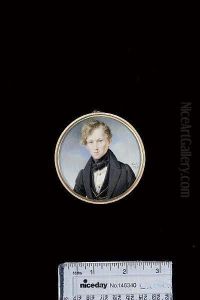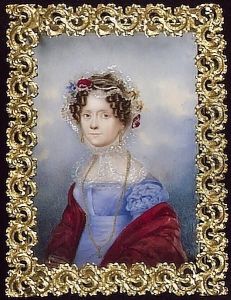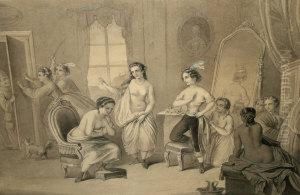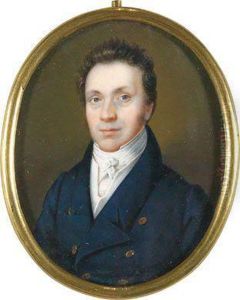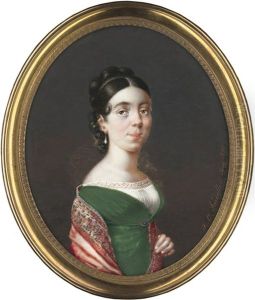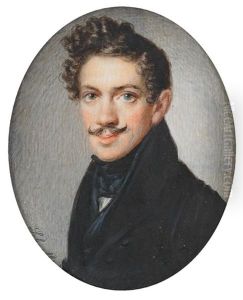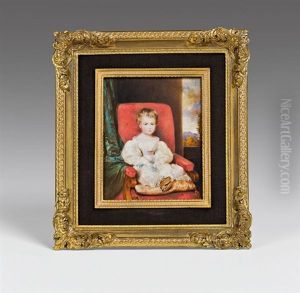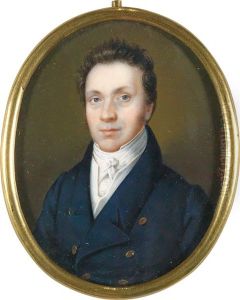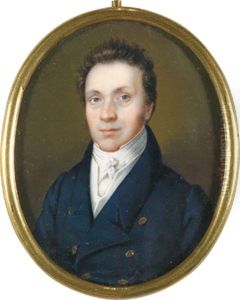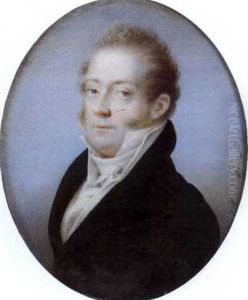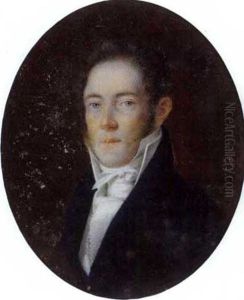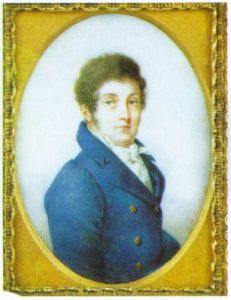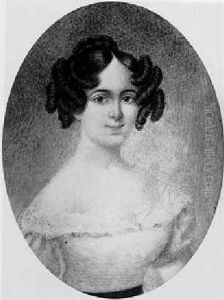Johann Christian Schoeller Paintings
Johann Christian Schoeller was an Austrian painter, primarily known for his portraits and genre scenes. He was born on April 14, 1782, in Schwäbisch Hall, Germany, but he spent the majority of his life and career in Vienna, Austria, which was a significant cultural hub in Europe at the time.
Schoeller moved to Vienna in his youth, where he began his artistic training. He initially studied under the painter Hubert Maurer and later under the famous portraitist Friedrich von Amerling. Schoeller's style was influenced by the Biedermeier period, a term that describes the artistic, literary, and musical styles that flourished in the German-speaking countries of Europe during the period of 1815 (the Congress of Vienna) to 1848 (the year of the European revolutions). The Biedermeier period was characterized by a sense of order and conservatism following the turbulence of the Napoleonic Wars.
Throughout his career, Schoeller became renowned for his fine portraiture, capturing the likeness and character of Vienna's bourgeoisie, nobility, and artistic elite. His works were appreciated for their precise draftsmanship, attention to detail, and subtle coloration. He also executed genre paintings, which depicted scenes from everyday life with the same clarity and detail that he brought to his portraits.
In 1828, Schoeller was appointed the official portraitist for the Imperial Court of Austria, a prestigious position that further established his status as a leading artist of his time. His works were exhibited in Vienna and garnered significant attention, contributing to his success as a commissioned portraitist.
Despite his success, Schoeller did not leave behind a considerable number of students or followers who continued his style. This, combined with changing tastes in art, particularly following the revolutions of 1848 that ushered in new artistic movements, meant that his name was not as widely recognized in later years as some of his contemporaries.
Johann Christian Schoeller passed away on July 21, 1851, in Vienna. His legacy is preserved through his portraits, which continue to be valued for their historical significance and their representation of Biedermeier-era aesthetics. His works can be found in various museums and art collections, offering a window into the society and culture of early 19th-century Vienna.
